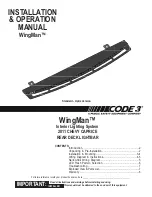
When buying a child seat, you need
to choose either a conventional child
seat, or one designed for use with
the lower anchors and tethers for
children (LATCH) system.
Conventional child seats must be
secured to a vehicle with a seat belt,
whereas LATCH-compatible seats
are secured by attaching the seat to
hardware built into the two outer
seating positions in the back seat.
Whatever type of seat you choose, to
provide proper protection, a child
seat should meet three
requirements:
Look for FMVSS
213 or CMVSS 213 on the box.
Before purchasing a conventional
child seat, or using a previously
purchased one, we recommend that
you test the seat in the specific
vehicle seating position or positions
where the seat will be used.
Rear-facing for infants, forward-
facing for small children.
Since LATCH-compatible child seats
are easier to install and reduce the
possibility of improper installation,
we recommend selecting this style.
In seating positions and vehicles not
equipped with LATCH, a LATCH-
compatible child seat can be installed
using a seat belt.
The child seat should meet U.S. or
Canadian Motor Vehicle Saf ety
Standard 213.
The child seat should f it the
vehicle seating position (or
positions) where it will be used.
The child seat should be of the
proper type and size to f it the child.
1.
2.
3.
Selecting Child Seats
44
07/05/17 16:49:53 31SEA640 0049
Summary of Contents for 2008 TSX
Page 6: ...07 05 17 16 42 06 31SEA640 0005 ...
Page 64: ...58 07 05 17 16 52 38 31SEA640 0063 ...
Page 252: ...246 07 05 17 17 25 20 31SEA640 0251 ...
Page 282: ...276 07 05 17 17 30 26 31SEA640 0281 ...
Page 328: ...322 07 05 17 17 38 21 31SEA640 0327 ...
Page 370: ...364 07 05 17 17 45 14 31SEA640 0369 ...
Page 376: ...370 07 05 17 17 46 04 31SEA640 0375 ...
Page 388: ...07 05 17 17 47 22 31SEA640 0387 ...
Page 389: ...07 05 17 17 47 25 31SEA640 0388 ...
















































